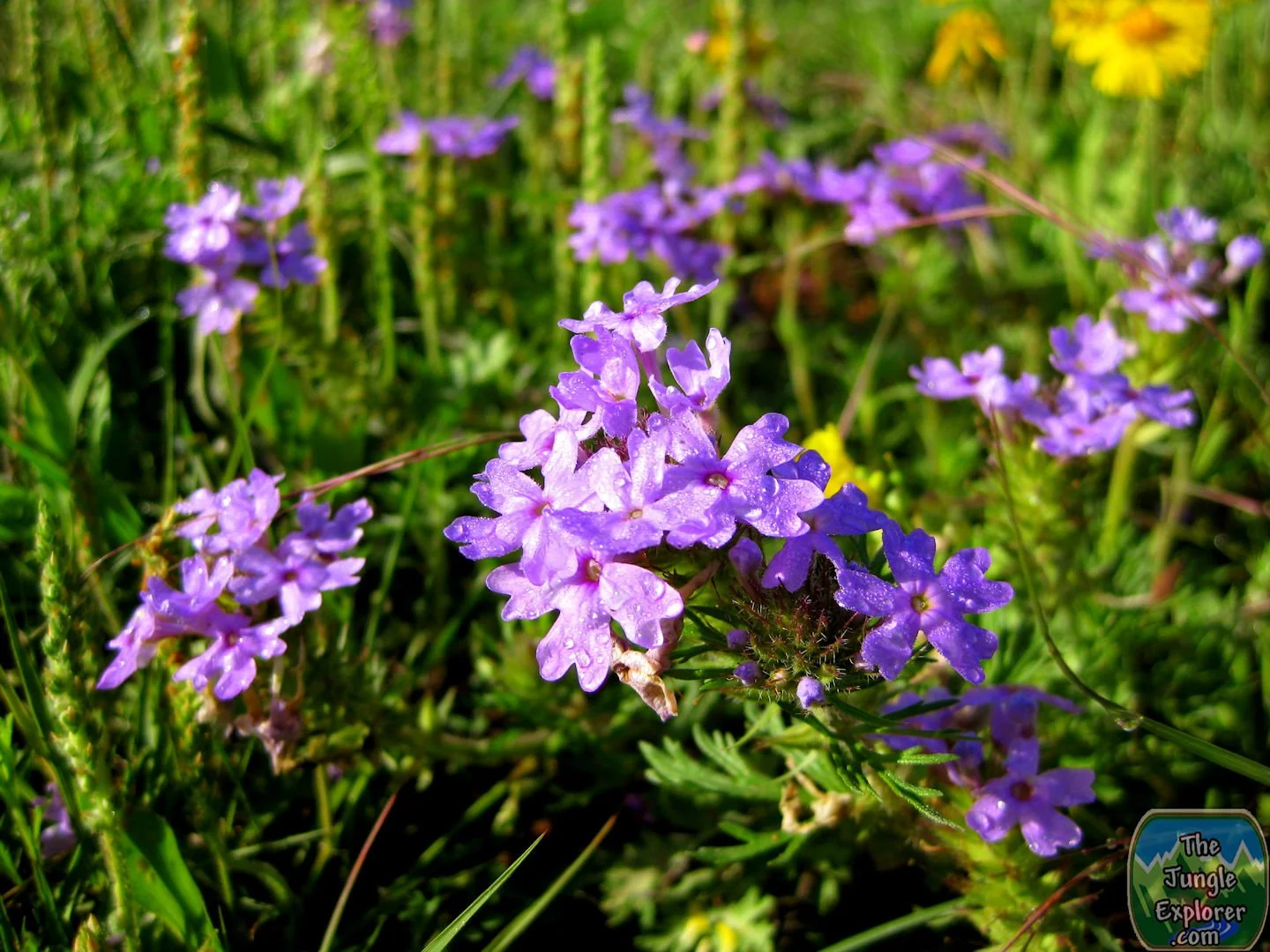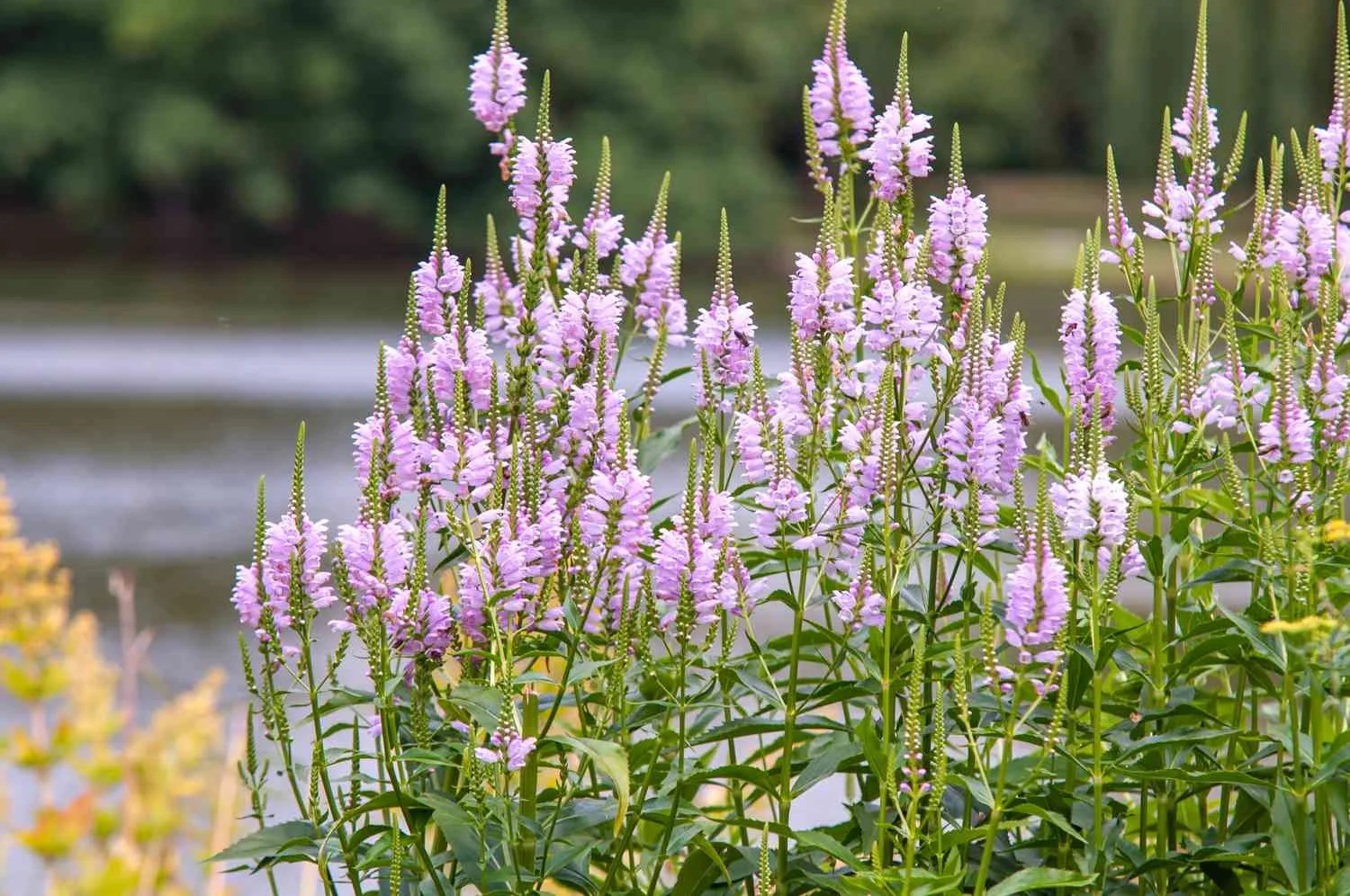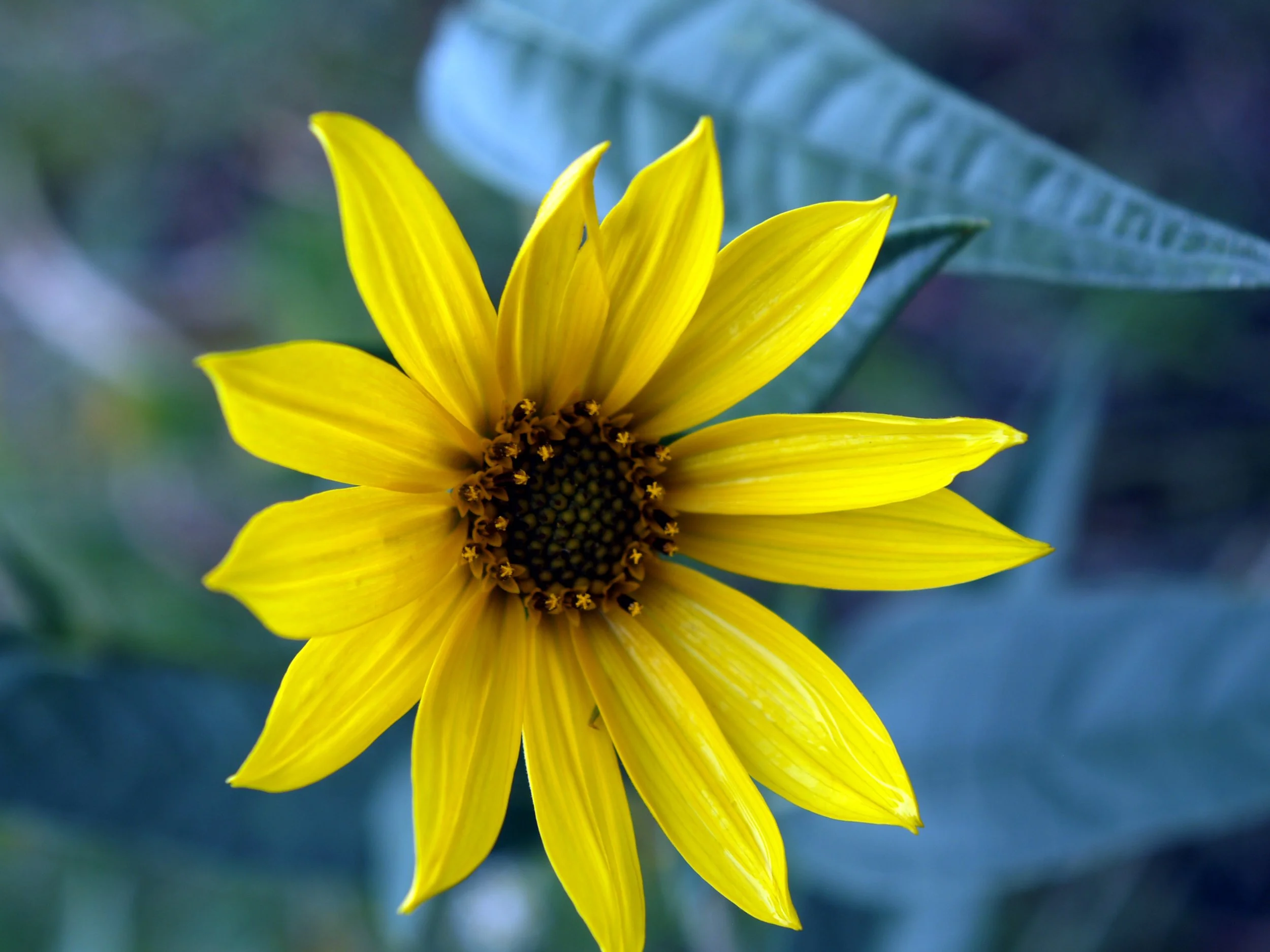Blooming Beauties: Unveiling Texas' Wildflowers and Where to Find Them
Discover > Truly Texan > Blooming Beauties: Unveiling Texas' Wildflowers and Where to Find Them
Discover the Beauty of Texas Wildflowers
Texas is a haven for native plants and wildflowers, boasting diverse colors and blooms that enchant nature enthusiasts and travelers alike. From the vibrant pink evening primrose to the striking Indian paintbrush, the Lone Star State offers a captivating display of floral wonders. Among the places to explore these natural treasures, the Lady Bird Johnson Wildflower Center stands out as a prime destination for discovering the rich botanical heritage of Texas. Moreover, embarking on the scenic Willow City Loop promises an unforgettable journey through some of the most picturesque wildflower landscapes in the state. So, gather your wildflower seeds and join us on an adventure to unveil the beauty of Texas wildflowers in their natural splendor.
Pink Evening Primrose
The pink evening primrose (Oenothera speciosa) is a native plant that thrives in the Texas Hill Country and other regions of the state. Its delicate pink petals add a touch of elegance to the wildflower landscapes. This hardy perennial blooms profusely from spring to early summer, attracting pollinators such as bees and butterflies.
The pink evening primrose's ability to withstand hot and dry conditions makes it a popular choice for Texas xeriscaping gardens and roadside plantings. You can typically find these beautiful blooms adorning the rolling hills of the Texas Hill Country, gracing prairies, and enhancing roadsides across the state, offering a delightful sight for all who encounter them.
Indian Paintbrush
Indian paintbrush (Castilleja spp.) is a striking wildflower commonly found in Texas. Its vibrant red, orange, and yellow flowers contrast beautifully with the surrounding greenery. Look for these captivating blooms in the Texas Hill Country and Central Texas. Indian paintbrush has a unique relationship with other plants, known as hemiparasitism, where it taps into the roots of neighboring plants to obtain nutrients.
This adaptation allows Indian paintbrush to thrive in various soil types and habitats, from open prairies to woodland edges. You can typically find this enchanting wildflower gracing the meadows and roadsides of the Texas Hill Country and Central Texas during its blooming season.
Texas Bluebonnet
The Texas bluebonnet (Lupinus texensis) is the state flower of Texas and one of the most iconic wildflowers in the Lone Star State. These blue beauties blanket the fields and roadways each spring, captivating visitors with their stunning display. Texas bluebonnets are part of the legume family, and their deep taproots help them survive in the nutrient-poor soils of Texas.
These hardy perennials add splashes of blue to the landscape and play a vital role in enriching the soil through nitrogen fixation. These magnificent blooms adorn the Texas countryside, gracing the picturesque Willow City Loop and other scenic drives throughout the state.
Pink Ladies
Pink ladies, also known as Showy evening primrose (Oenothera speciosa), are charming wildflowers that can be found throughout Texas, particularly in the Texas Hill Country and East Texas. Their bright yellow blooms add a cheerful touch to the landscape.
These resilient flowers showcase their adaptability by thriving in various habitats, from rocky slopes to open prairies. As the sun sets, the blossoms of pink ladies unfurl, enticing moths and other nighttime pollinators. Furthermore, Native American tribes have long utilized the roots of pink ladies for their medicinal properties.
Indian Blanket
Indian blanket (Gaillardia pulchella) is a native wildflower known for its vivid red and yellow petals. It thrives in various regions of Texas, including the Texas Hill Country and the Gulf Coast. You can spot these striking flowers, also called firewheels, in open fields and along roadsides, creating a vibrant tapestry of color. Indian blankets play a crucial role in the ecosystem as an essential food source for butterflies and bees, offering nectar-rich blooms. These captivating wildflowers frequently join mixed displays of native species, enhancing the visual splendor of the landscape.
Prairie Verbena
Prairie verbena (Glandularia bipinnatifida) is a delightful wildflower with clusters of purple flowers. It is well-adapted to Texas's dry climate and can be found in the Texas Hill Country and Central Texas, where it thrives in arid conditions. Watch for its vibrant blooms in spring and early summer as they grace the landscape with vivid purple hues.
Prairie verbena is a beloved choice among pollinators, drawing in butterflies, bees, and other beneficial insects with its nectar-rich blossoms. It forms dense mats of flowers, creating a striking purple carpet across meadows, prairies, and rocky slopes.
Purple Poppy Mallow
Purple poppy mallow (Callirhoe involucrata) is a native wildflower with stunning bluish-purple flowers. It is particularly prevalent in the Texas Hill Country and other regions with well-drained soils, where it finds its ideal habitat. Look for these eye-catching flowers in late spring and early summer as they grace the landscape with their vibrant colors.
Purple poppy mallow's trailing stems, and striking blooms make it a sought-after addition to rock gardens, where it can cascade over retaining walls and add a touch of beauty. The flowers exhibit a unique behavior, closing during the heat of the day and reopening in the late afternoon, a sight that attracts busy bees and graceful butterflies.
Texas Thistle
Texas thistle (Cirsium texanum) is a tall and spiky wildflower native to Texas. It thrives in a variety of habitats and can be spotted in places like the Texas Hill Country and the Gulf Coast, where its brilliant pink to purple blossoms draw attention. Be on the lookout for the beautiful flowers of the Texas thistle in wide fields and at the sides of roadways.
Texas thistle, despite its thorny appearance, is an important nectar source for pollinators like bees and butterflies. In addition to its aesthetic value, this wildflower is vital to the local ecosystem because it provides food for the caterpillars of numerous butterfly species.
Cedar Sage
Cedar sage (Salvia roemeriana) is a lovely Texas native wildflower that thrives in the shade of cedar trees, making it a perfect choice for woodland landscapes. Its vibrant red flowers add a splash of color and attract hummingbirds and other pollinators to your garden. Look for cedar sage in the Texas Hill Country and other regions with cedar woodlands, where it naturally grows in the understory.
This perennial plant delights with its long blooming period, extending from spring to fall, ensuring months of continuous beauty in your garden. It is particularly well-suited to woodland gardens and shaded areas, where it thrives in the dappled sunlight, adding an enchanting touch to the landscape.
Purple Coneflower
Purple coneflower (Echinacea purpurea) is a perennial wildflower that blooms with striking pink to purple flowers, adding vibrant color to various landscapes. While it is not native to Texas, this resilient flower has adapted well to the state's climate and can be commonly found in gardens, prairies, and meadows throughout Texas.
You can count on seeing these lovely flowers everywhere in the late spring and summer. Purple coneflower holds significant value beyond its aesthetic appeal, as it is highly regarded for its medicinal properties. Its roots and flowers have been utilized in traditional herbal remedies for centuries. The plant's nectar-rich flowers also serve as a magnet for butterflies and bees, making it an excellent choice for those looking to create a pollinator-friendly garden.
Texas Lantana
Texas lantana (Lantana urticoides) is a popular native plant known for its bright, multi-colored flowers that bring a vibrant touch to any landscape. This tough plant does well in full sun and tolerates dry conditions, making it ideal for Texas. Visit the Hill Country and the Gulf Coast, two of Texas' many unique locations, and keep your eyes out for the brilliant flowers of the Texas lantana. Many butterflies, including monarchs, swallowtails, and skippers, are attracted to its colorful petals and sweet scent.
As the flowers mature, they undergo color changes, creating an ever-changing display of yellow, orange, and red hues. However, it's essential to remember that while Texas lantana is a beautiful addition to any garden, it can pose a risk to pets if ingested, as it contains toxic compounds.
Big Bend Bluebonnet
The Big Bend bluebonnet (Lupinus havardii) is a unique species of bluebonnet that exclusively grows in the rugged beauty of the Big Bend region of Texas. With larger and bolder blue flowers than the traditional Texas bluebonnet, these majestic blooms are a sight to behold. Venture into the arid landscapes of Big Bend National Park and the surrounding areas to witness the splendor of the Big Bend bluebonnets.
These resilient wildflowers have adapted to the harsh desert conditions of West Texas, flourishing in sandy, well-drained soils. Against the backdrop of the desert's vast expanse, their vibrant blooms create a breathtaking contrast, captivating photographers and nature enthusiasts alike.
Four Nerve Daisy
Four nerve daisy (Tetraneuris scaposa) is a charming wildflower that bursts with bright yellow flowers, each adorned with distinct four-lobed petals. Its cheerful blooms can be spotted in the Texas Hill Country and various other state regions. Venture out in the spring and early summer to glimpse these delightful flowers in full bloom.
Four nerve daisies thrive in the dry and rocky habitats that characterize Texas, frequently gracing meadows, open fields, and the edges of roadsides. Gardeners and wildflower enthusiasts appreciate their delicate yet resilient nature, making them a treasured addition to any landscape.
Plains Coreopsis
Plains coreopsis (Coreopsis tinctoria) is a radiant wildflower that graces the Texas landscape with its bright yellow flowers adorned with contrasting dark red centers. It is a familiar sight in the Lone Star State, commonly found in fields, meadows, and roadsides. Watch for these delightful blooms during the spring and summer months.
Plains coreopsis not only adds a touch of cheer to the surroundings but also serves as a valuable resource for pollinators. Bees, butterflies, and insects flock to its nectar-rich flowers, contributing to nearby plants' ecological balance and pollination. Due to its adaptability and appeal, this easy-to-grow wildflower is frequently included in seed mixes for establishing native prairies and meadows throughout Texas.
Chocolate Daisy
Chocolate daisy (Berlandiera lyrata) is an extraordinary wildflower renowned for its enchanting chocolate-like scent and unique yellow flowers. Like those found in the Texas Hill Country, well-drained soils are ideal for its growth. These stunning blossoms tend to appear in the late spring and early summer.
The name "Chocolate daisy" aptly reflects the irresistible aroma resembling cocoa emitted by their flowers. This alluring scent is a magnet for pollinators, including bees and butterflies, particularly in the morning and evening. Beyond their olfactory charm, chocolate daisies also hold cultural significance, as Native American tribes traditionally utilized them for medicinal and culinary purposes.
Lemon Mint
Lemon mint (Monarda citriodora) is a captivating wildflower that exudes a delightful lemony fragrance. It thrives in diverse regions across Texas, including the scenic Hill Country and picturesque East Texas. During the summer, you should look for these beautiful flowers.
Bee balm, or lemon mint, is highly attractive to pollinators like hummingbirds and butterflies. Its tubular flowers, ranging from pink to lavender, offer a plentiful supply of nectar, making it an irresistible attraction in gardens and natural habitats. In addition to its ornamental value, the aromatic leaves of lemon mint can be harvested to create flavorful herbal teas and invigorating infusions.
Scarlet Sage
Scarlet sage (Salvia coccinea) remains a beloved native Texas wildflower that boasts a profusion of vivid red flowers. Its allure extends across the Texas Hill Country, the Gulf Coast, and other regions. See these dazzling blooms as the late spring transitions into summer. In gardens and natural landscapes, scarlet sage stands out as an attention-grabbing beauty, painting the surroundings with its radiant hues.
The irresistible nectar of its flowers beckons hummingbirds and butterflies, enhancing their vibrant presence in the ecosystem. Furthermore, scarlet sage is favored for its ease of cultivation, making it a sought-after option for both formal and informal garden settings.
Obedient Plant
Obedient plant (Physostegia virginiana) retains its tall and graceful stature as a wildflower adorned with lovely pink to purple flowers. Its presence graces wetlands, meadows, and streamsides across the Texas landscape. Look for these elegant blooms as the late summer transitions into early fall.
The moniker "obedient plant" stems from its flexible stems that can be easily bent into different positions without snapping. Once positioned, the flowers dutifully remain in place, bestowing the plant with its distinctive quality. This captivating wildflower exhibits remarkable adaptability, thriving in moist and drier conditions, making it a delightful addition to various landscapes.
Mexican Hat
Mexican hat (Ratibida columnifera) proudly showcases its unique and vibrant red and yellow petals, resembling a sombrero. This enthralling wildflower finds its home in various regions of Texas, including the captivating Hill Country and the picturesque Gulf Coast. Embrace the joy of discovering these whimsical blooms during the summer months.
Mexican hat is a resilient and adaptable wildflower, thriving in a plentiful array of soil types, from sandy to clay. Its eye-catching flowers bring a burst of color to the landscape and serve as a vital food source for bees and butterflies. Additionally, this hardy plant holds cultural significance, as it has been utilized in traditional Native American medicine for a variety of ailments.
Blackfoot Daisy
Blackfoot daisy (Melampodium leucanthum) gracefully displays its drought-tolerant nature with its white flowers and sunny yellow centers. It does particularly well in the Hill Country and the wide open spaces of West Texas, where the climate is dry, and the terrain is rocky. During the revitalizing spring and summer months, appreciate the beauty of these delicate blooms.
Blackfoot daisies have evolved to thrive in the challenging conditions of Texas's arid regions, making them a perfect choice for xeriscaping and water-wise gardening. Their delicate appearance belies their resilience, as they can withstand prolonged periods of drought. Moreover, their charming flowers beckon a rich array of pollinators, including bees, butterflies, and small flies, further enhancing the ecological vibrancy of the region.
Maximilian Sunflower
Maximilian sunflower (Helianthus maximiliani) stands tall and majestic, showcasing its brilliant yellow flowers. It proudly thrives in the expansive prairies, meadows, and picturesque roadsides across different regions of Texas. Marvel at these impressive blooms during the late summer and fall seasons. Maximilian sunflowers bring joy as the days grow shorter, infusing landscapes with vibrant hues long after other flowers have waned.
Their presence is not only visually appealing but also essential for wildlife. Bees, butterflies, and birds flock to these sunflowers, enticed by their abundant nectar and nutritious seeds. When gathered in dense stands, Maximilian sunflowers create a stunning visual spectacle, adding an extra touch of splendor to the natural tapestry of the area.
Lemon Beebalm
Lemon beebalm (Monarda citriodora) remains a fragrant wildflower, boasting charming pink to lavender flowers. Bees, butterflies, and hummingbirds are drawn to its flowers. Venture into the enchanting Texas Hill Country and other regions blessed with well-drained soils to witness these delightful blossoms.
The lemony scent released from crushed Lemon beebalm leaves is almost as captivating as the plant's visual appeal. Due to its copious nectar production and role as a host plant for certain butterfly species, it is an indispensable addition to butterfly gardens and other pollinator habitats. Thanks to its colorful flowers and energizing scent, lemon beebalm is a favorite among dedicated gardeners and outdoor enthusiasts.
Goldeneye Phlox
Goldeneye phlox (Phlox drummondii) retains its colorful allure, displaying pink, purple, and white flower clusters. Wander through the picturesque fields, meadows, and roadsides of Texas to encounter these vibrant blooms. Embrace the spring season as goldeneye phlox adorns the landscape with its striking presence.
This wildflower proudly represents its Texan heritage, named after the renowned Scottish botanist Thomas Drummond, who meticulously documented the state's rich flora in the 19th century. The showy flowers form a captivating carpet of color, enchanting bees, butterflies, and a plethora of other pollinators. Notably adaptable, goldeneye phlox thrives in various soil conditions, making it an ideal choice for naturalizing expansive areas.
Huisache Daisy
Huisache daisy (Amblyolepis setigera) retains its inherent charm, showcasing yellow flowers and adorned with feathery foliage. Visit the Hill Country and the Gulf Coast, among other parts of Texas, to find this striking flower. Huisache daisies are a welcome sign of spring and summer, adding a touch of delicate beauty to the landscape.
Adapted to thrive in Texas's coastal and sandy habitats, these daisies flourish in sandy soils near dunes and beaches. Their delicate flowers create a captivating contrast against the silvery-gray, feathery leaves. The allure extends beyond their visual appeal, as huisache daisies entice an array of pollinators, including bees and butterflies. These beguiling wildflowers are often cultivated to support native insect populations, nurturing the delicate balance of ecosystems.
Discovering the Wildflowers of Texas
Texas's abundant spectrum of wildflowers adds a vibrant tapestry of colors and scents to the landscape. From the enchanting purple blooms of Prairie verbena in the Hill Country to the whimsical Mexican hat flowers scattered across the state, each wildflower has its unique charm and role in supporting local ecosystems.
So, the next time you find yourself strolling through the meadows, hiking along a trail, or simply enjoying the beauty of nature, keep an eye out for these incredible wildflowers. Take a moment to appreciate their delicate beauty and their valuable role in supporting Texas' biodiversity. And who knows, maybe you'll be motivated to start your own wildflower garden or go on a statewide wildflower quest in the Lone Star State.


























